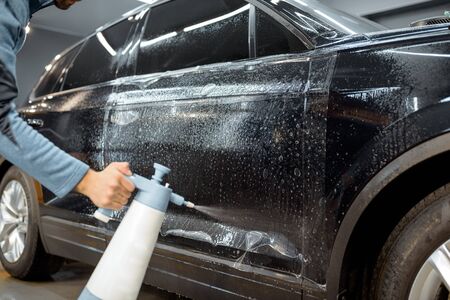Introduction to Water-Based Paints and Coatings
When you think about the cars driving down American highways, you probably notice their shiny colors and flawless finishes. But have you ever wondered what goes into making those eye-catching exteriors? In recent years, the automotive industry has been buzzing about water-based paints and coatings. Unlike traditional solvent-based paints, which rely heavily on harsh chemicals and volatile organic compounds (VOCs), water-based alternatives use water as the main carrier. This simple swap makes a world of difference—not just for car manufacturers, but for our environment and communities too.
2. Environmental Benefits and Sustainability
Water-based paints and coatings are making a real difference in how cars are manufactured, especially when it comes to sustainability. Unlike traditional solvent-based coatings, water-based alternatives dramatically cut down on harmful volatile organic compound (VOC) emissions. This shift isn’t just about meeting regulations—it’s about creating cleaner air for communities and safer conditions for workers on the production line.
Reduced VOC Emissions: A Game Changer
One of the biggest environmental wins for water-based coatings is their low VOC content. VOCs contribute to air pollution and can cause health problems, but water-based formulas contain far fewer of these chemicals. The table below highlights the difference between traditional and water-based options:
| Coating Type | Average VOC Content (g/L) |
|---|---|
| Solvent-Based | 400–600 |
| Water-Based | 50–100 |
Improved Workplace Safety
Switching to water-based paints also means a safer environment for employees. These coatings are less flammable and release fewer toxic fumes, reducing risks for everyone working in automotive plants. This aligns perfectly with America’s increasing focus on occupational safety standards and the well-being of its workforce.
Supporting America’s Greener Manufacturing Goals
The move toward water-based coatings fits right in with America’s push for greener manufacturing. By adopting eco-friendly paint solutions, automotive companies aren’t just ticking boxes—they’re leading the charge in responsible production that benefits both people and the planet. As more manufacturers make the switch, we all get closer to a sustainable future where high-quality vehicles don’t come at the expense of our environment.

3. Performance and Application in Modern Vehicles
When it comes to real-world automotive use, water-based paints and coatings have proven themselves as reliable contenders in the industry. One of the most important factors for any car owner or manufacturer is durability. Water-based coatings are engineered to withstand everyday wear and tear—think road debris, minor scratches, and even those occasional parking lot mishaps. Unlike older solvent-based options, these coatings resist chipping and fading, providing a longer-lasting finish that keeps vehicles looking newer for longer.
Color retention is another area where water-based solutions really shine. American drivers love bold, vibrant colors that reflect personality and brand identity. Thanks to advances in pigment technology, water-based automotive paints deliver rich hues that remain true even after years of exposure to sunlight and harsh weather. Whether you’re driving through California’s dry heat, Florida’s humidity, or the snowy Midwest, these coatings maintain their brilliance without yellowing or dulling over time.
Adaptability is key for vehicles facing diverse American road conditions. Water-based paints are designed to expand and contract with temperature changes, which means fewer cracks and peels when your car transitions from icy winters to scorching summers. Their formulation also allows for quick repairs, making touch-ups easier and more eco-friendly compared to traditional alternatives. In short, today’s water-based paints meet—and often exceed—the expectations of American drivers who demand both style and substance from their vehicles.
4. Innovative Trends and Technologies
As the automotive industry pushes toward more sustainable practices, water-based paints and coatings are at the forefront of innovation. Manufacturers are constantly searching for solutions that not only reduce environmental impact but also deliver superior performance and efficiency. Here’s a look at some of the most exciting trends and technologies shaping the future of automotive coatings.
Rapid-Cure Technology: Speed Meets Sustainability
One of the standout advancements in water-based coatings is rapid-cure technology. Traditional paint curing can be time-consuming and energy-intensive, but with rapid-cure systems, manufacturers can significantly cut down on both time and energy usage. These new formulas allow for faster drying at lower temperatures, which means reduced carbon emissions and quicker turnaround times on the assembly line. This is a win-win for both sustainability goals and operational efficiency.
Smart Coatings: Beyond Just Color
Smart coatings are taking automotive finishes to the next level. These innovative water-based solutions offer functionalities such as self-healing surfaces, anti-scratch properties, UV resistance, and even temperature regulation. With these features, vehicles stay looking newer for longer while requiring less maintenance—another sustainable benefit that appeals to today’s eco-conscious consumers.
Comparison Table: Key Innovations in Water-Based Automotive Coatings
| Technology | Main Benefit | Sustainability Impact |
|---|---|---|
| Rapid-Cure Systems | Faster production cycles | Lower energy use & emissions |
| Self-Healing Smart Coatings | Automatic minor scratch repair | Extends vehicle lifespan, reduces waste |
| UV-Resistant Formulas | Prevents fading & degradation | Less repainting needed over time |
| Low-VOC Water-Based Paints | Improved air quality in factories | Reduces harmful emissions |
Staying Ahead: Why Innovation Matters Now More Than Ever
The pressure to adopt greener manufacturing practices is only going to increase as regulations tighten and consumers demand more sustainable vehicles. By embracing rapid-cure systems, smart coatings, and other cutting-edge technologies, automakers can maintain a competitive edge while meeting their environmental responsibilities. These innovations not only support sustainability but also help brands build trust with customers who care about the planet.
5. Challenges and Solutions in Adoption
Understanding the Barriers to Water-Based Paints
While water-based paints and coatings offer clear environmental benefits, their adoption in the automotive industry isn’t without challenges. The most common barriers include higher upfront costs, technical adjustments for application, and the need for specialized training. Let’s break down these hurdles and explore how automakers can move forward successfully.
Cost Concerns: Investing in the Future
Switching from traditional solvent-based systems to water-based alternatives often requires a significant initial investment. This includes upgrading spray booths, ventilation systems, and curing equipment. However, these costs can be offset by long-term savings on hazardous waste disposal, lower insurance premiums due to reduced fire risk, and potential government incentives for sustainable practices.
Technical Hurdles: Tweaking Processes for Performance
Water-based coatings have different drying characteristics and application requirements compared to solvent-based products. Automakers may need to adjust temperature controls, humidity levels, or spray techniques to achieve optimal results. Partnering with paint suppliers who offer tailored support and ongoing R&D can help manufacturers overcome these technical challenges efficiently.
Training Needs: Empowering Teams for Success
Introducing new materials means upskilling staff on application methods, safety protocols, and maintenance routines. Investing in comprehensive training programs ensures that employees are confident and capable of handling water-based systems—leading to smoother transitions and better product quality.
Practical Strategies for Smooth Transitions
The key to successful adoption lies in phased implementation. Start with pilot projects on select production lines to identify best practices before scaling up plant-wide. Collaborate closely with suppliers for hands-on support, and take advantage of grants or tax credits designed to promote green manufacturing. By addressing each challenge proactively, automakers can accelerate their journey toward a more sustainable future—without sacrificing performance or profitability.
6. Future Directions and Impact on the American Automotive Market
Looking ahead, water-based paints and coatings are poised to play an even bigger role in shaping the future of the US automotive industry. As technology advances and regulations continue to tighten around emissions and environmental safety, American automakers are doubling down on eco-friendly solutions that don’t compromise quality or performance. Water-based coatings, with their lower VOC emissions and improved safety profile, are quickly becoming the go-to choice for manufacturers aiming to meet both legal requirements and consumer expectations.
Innovations Driving Change
New research and development in water-based paint technology promise better durability, faster drying times, and a wider range of color options. These improvements mean that manufacturers no longer have to choose between sustainability and aesthetics. In fact, some of the latest water-based systems rival or even surpass traditional solvent-based products in terms of gloss, scratch resistance, and longevity—a win-win for carmakers and drivers alike.
Meeting Consumer Demands
American consumers are more environmentally conscious than ever before, often preferring brands that prioritize green initiatives. The shift toward water-based paints allows automakers to market vehicles as more sustainable from the ground up, appealing to eco-minded buyers who want their cars to reflect their values. This trend is especially strong among younger generations, who see sustainability not just as a bonus but as a necessity.
The Road Ahead for Manufacturers
For US automakers, investing in water-based coating technology isn’t just about compliance—it’s about staying competitive in a rapidly evolving market. Companies that adopt these innovations early can position themselves as industry leaders, attract new customers, and even benefit from incentives tied to environmental performance. Plus, with ongoing improvements in application processes and product formulations, switching to water-based systems is becoming more cost-effective each year.
A Greener Tomorrow
The broader impact on the environment can’t be overlooked. As more automotive plants switch to water-based paints, there’s a significant reduction in harmful air pollutants, improved workplace conditions for employees, and less hazardous waste overall. This transformation supports nationwide efforts to reduce the automotive industry’s carbon footprint—helping create cleaner air and healthier communities across America.
In summary, water-based paints and coatings aren’t just a trend—they’re setting the standard for a greener, more responsible American automotive industry. For manufacturers looking to future-proof their operations and for consumers seeking vehicles that align with their values, embracing this change is a smart move that benefits everyone.

